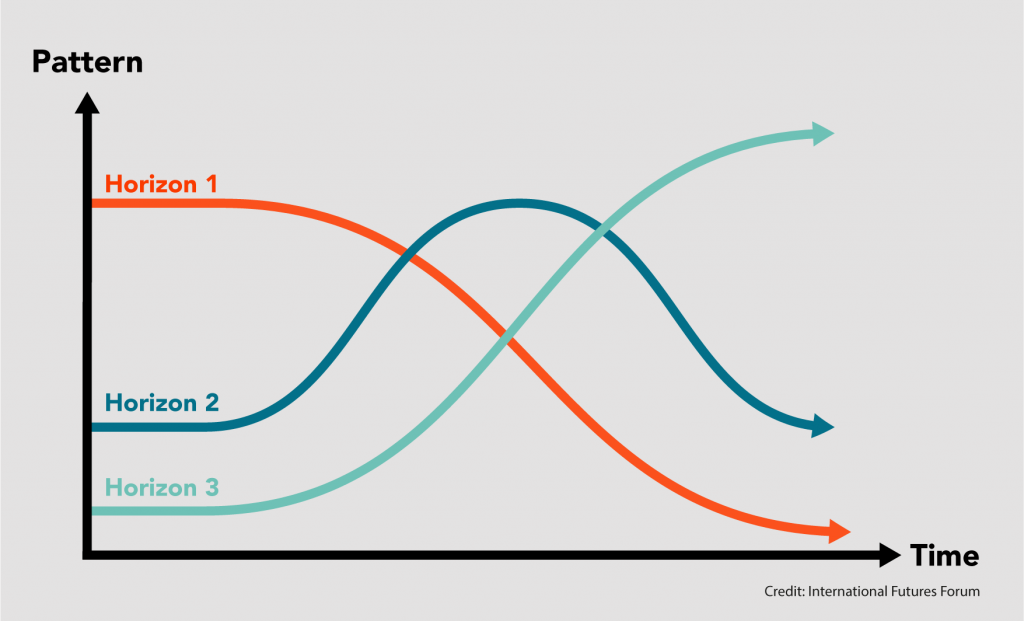The Three Horizons tool, created by Bill Sharpe of International Futures Forum, can help leaders and stakeholders understand what is happening today, articulate their preferred future and, identify preferred innovations and strategies for moving toward it.

Consider how well current approaches are working and where they are falling short. Use the present tense to describe what is happening today.
Consider how well current approaches are working and where they are falling short. Use the present tense to describe what is happening today.
Examine current and potential innovations and strategies that could sustain horizon one or lay groundwork for horizon three. Use the conditional tense to describe approaches that could help bridge between horizons one and three.
Further guidance on working with the Three Horizons method is available from the International Futures Forum and H3Uni. These include three method facilitation guides (see the Methods section).

